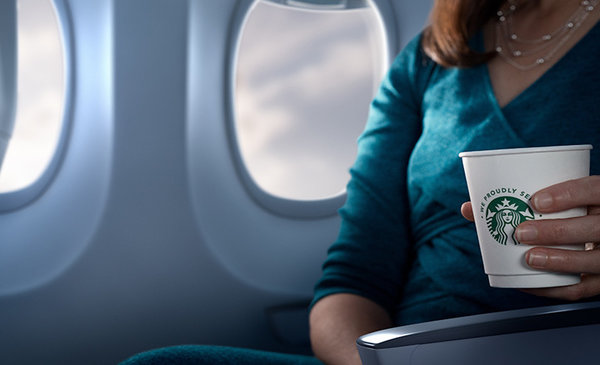
What do United Airlines and Starbucks coffee have in common? Take one of United’s U.S. flights, and you’ll find out.
On every domestic flight you’re served Starbucks coffee. In fact, the deal between the two companies requires flight attendants to say “Starbucks Coffee” when offering in-flight beverages.
What we’re seeing is the trend toward brand alliances. Brands that are mutually complementary team up with each other and with their partners’ brand missions. A quick look at several major U.S. supermarkets reveals they offer Starbucks coffee. Starbucks cafés are situated in the stores. Starbucks analysed its traffic flow and concluded people are in the mood for a cup of something while waiting around. Successfully selling coffee to such customers optimises revenue flow for both the coffee chain and host establishments. Thus, brand alliances are born that benefit both the consumer and the bottom line.
What’s this got to do with online branding? Brand alliances, as we know them, are in the midst of an interesting change. Some years ago, most brand builders would have been aghast at the thought of their brands being seen alongside other brands. Brands should be perceived in exclusivity, they believed. That theory is no longer applicable. It’s impossible to be the best in each and every way. That’s why complementary companies need each other. Brand builders must identify the best companies within fields/disciplines/product categories that are complementary to their own and team up with them.
The potential for creative thinking in this type of cooperative brand building is massive. Key to its success is to ensure the values and brand propositions of potential brand alliance partners bear clear, relevant relationships with each other.
Australia’s national airline, Qantas, built a brand alliance with Hertz. Through it, the airline secures a referral fee and ostensibly offers customers an enhanced service. The World Health Organization (WHO) teamed with British Airways to collect money for its cause.
Be prepared to see some innovative and interesting brand combinations in the future. Expect to see the trend mirrored online. The strategy ensures consumers are exposed to favored brands in new contexts, their product knowledge expands, and their brand use becomes more versatile.
Think through every aspect of your brand’s use. Determine how to fit your customers’ current product utilization into new contexts. If you sell flowers, team up with a vase manufacturer, teddy bear supplier, or balloon merchant. If you sell computers, get together with an education provider and offer educational programs to help customers learn more about their computers. Think intuitively. What makes sense to your customers? Identify a potential use area for your brand, select a brand whose values marry well with your brands, and propose a branding partnership.
Brand alliances are set to become a dominant marketing approach. Brand alliances are cheap and effective and work in the mutual interests of brands and their customers. A well structured, sensibly conceived brand alliance won’t dilute your brand. Be clear about what your brand stands for and what your partner brand’s values are. With a logical and meaningful relationship between the values of each partner brand, consumers will find cooperative promotions informative, expanding, and useful.
Walk yourself through your customers’ experiences. Identify product categories they select; identify brands that represent those categories; then compare your brand’s values and proposition with those of likely partner brands.
The Blake Project Can Help: Disruptive Brand Strategy Workshop
Branding Strategy Insider is a service of The Blake Project: A strategic brand consultancy specializing in Brand Research, Brand Strategy, Brand Licensing and Brand Education





3 comments
ted
April 8, 2009 at 2:52 am
But Starbucks’ brand is tanking, potentially bringing down United with it as Starbucks struggles to find itself in the cutthroat value- and convenience-driven world of fast food.
Bruce
April 9, 2009 at 10:02 am
Agree with Ted, about the vulnerability of the Starbuck’s brand right now and its impact on United. However, this alliance has been a problem for Starbuck’s, too. Have you tasted the Starbuck’s that is served? Tastes like any other coffee on a plane. Doesn’t deliver on the Starbuck’s taste experience at all. As you say “Walk yourself through your customers’ experience.” A disappointing one for Starbuck’s fans I’d say.
Derrick Daye
April 9, 2009 at 6:17 pm
Ted and Bruce – good observations. Remember the essence of the Starbucks brand? ‘Rewarding everyday moments’. From the outset the brand was not about the product, rather the experience. In the United scenario the product must stand alone. Does it? The debate is on. Or is it?
Where does Starbucks have its best chance to deliver on its promise? In its stores. Choose your battle(fields) wisely.
Derrick
Comments are closed.